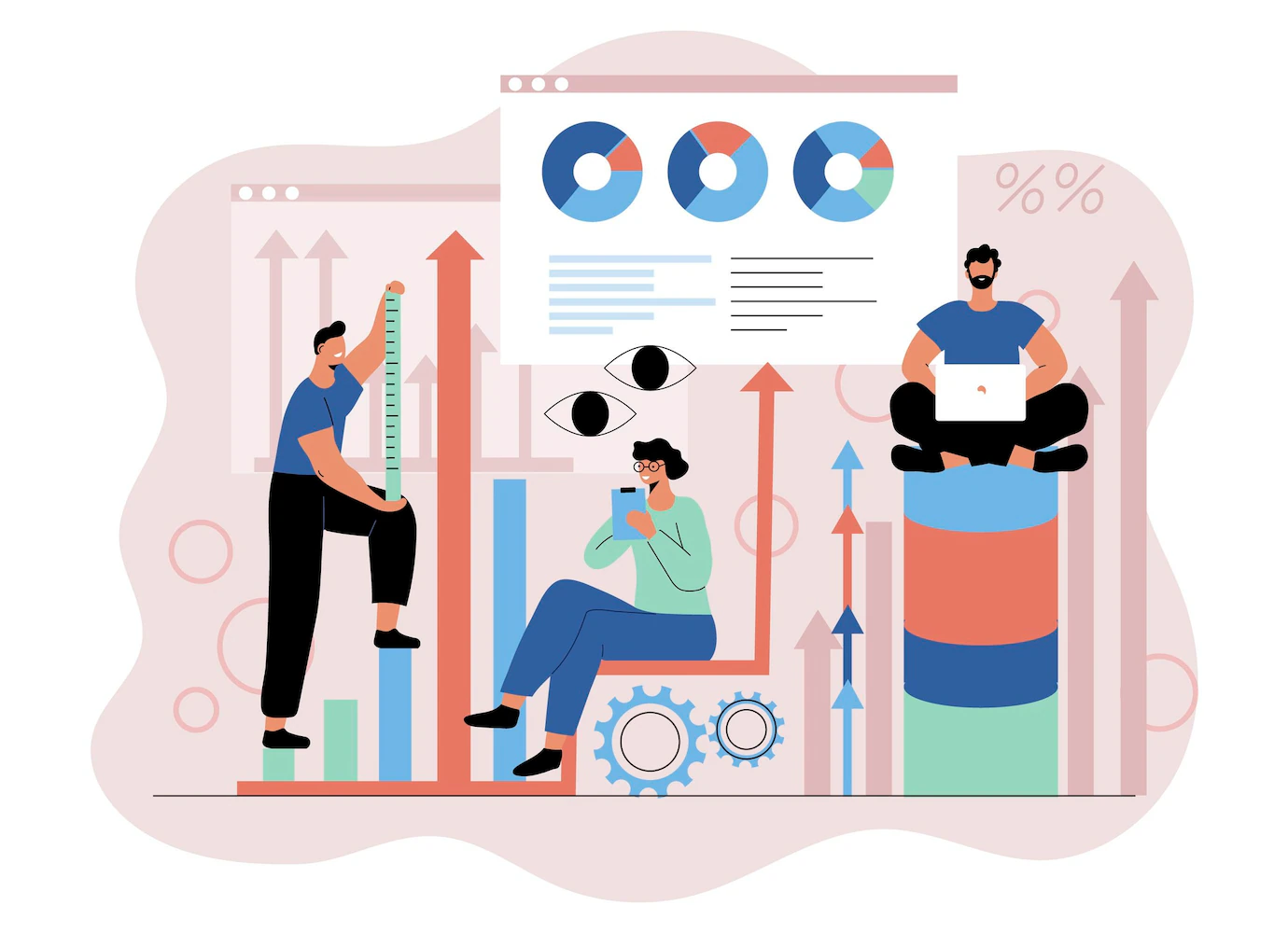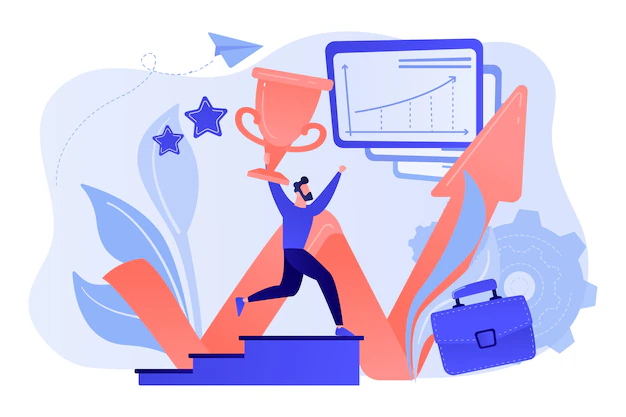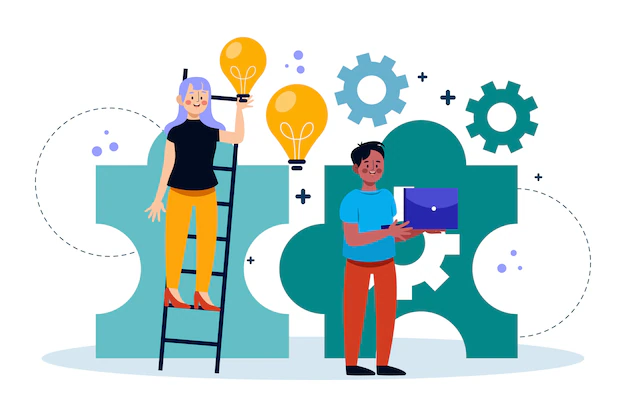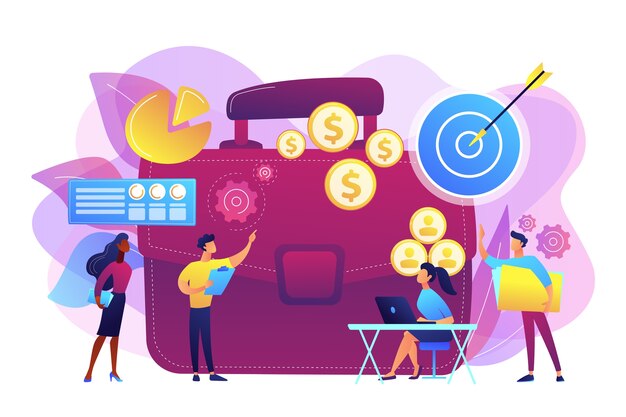Intrinsic Rewards And Extrinsic Rewards: The Ultimate Guide


by Signe Hegart
October 24, 2023
In today’s fiercely competitive world, recognizing the significance of rewards and incentives, especially when it comes to employee incentives, is paramount for companies spanning various departments. This comprehensive guide is designed to offer a thorough exploration of both intrinsic and extrinsic rewards and their pivotal roles in nurturing motivation, satisfaction, and productivity among employees. By skillfully harmonizing these two types of rewards, companies can establish a work environment that not only encourages employee engagement but also paves the way for overall success.
Jump to section
What are Intrinsic Rewards And Extrinsic Rewards? ????
Before delving deeper into the topic, it is important to understand what intrinsic and extrinsic rewards are. Intrinsic rewards refer to the internal sense of satisfaction and fulfillment that individuals experience when accomplishing a task or engaging in an activity. On the other hand, extrinsic rewards are tangible rewards that are external to the individual, such as bonuses, promotions, or recognition. Intrinsic rewards and extrinsic rewards are two fundamental concepts in psychology and motivation, describing different types of incentives that drive human behavior.
Intrinsic Rewards
– Are internal, psychological, or emotional rewards that come from within an individual. These rewards are inherently satisfying and provide a sense of fulfillment.
– They are associated with activities people do because they find them enjoyable, interesting, or personally meaningful.
– Examples of intrinsic rewards include a sense of accomplishment, personal satisfaction, the joy of learning, a feeling of pride, or a sense of purpose.
Extrinsic Rewards
– Are external and tangible rewards provided by others or the environment. They are typically used to motivate or influence behavior by offering a desirable outcome or consequence.
– Can include things like money, praise, recognition, bonuses, promotions, or grades in an educational setting.
– These rewards are used to encourage individuals to engage in certain activities or behaviors that they might not find intrinsically motivating.
The key distinction between intrinsic and extrinsic rewards is the source of motivation. Intrinsic rewards come from within the individual, while extrinsic rewards come from external sources. Both types of rewards can be powerful motivators, but they operate in different ways and can have varying effects on motivation and behavior. A well-balanced approach to motivation often involves understanding and leveraging both intrinsic rewards and extrinsic rewards to achieve desired outcomes and promote overall well-being.
Read also: 21 Perfect Non-Monetary Incentives To Reward Your Employees
Why are Intrinsic Rewards And Extrinsic Rewards Important?
Intrinsic rewards and extrinsic rewards are important because they play a significant role in shaping human behavior, motivation, and overall well-being. Here’s why they are essential:
1. Motivation and Goal Achievement
- Intrinsic Rewards: Intrinsic rewards are essential for fostering self-motivation. When individuals find joy and satisfaction in what they do, they are more likely to be driven to pursue their goals, learn, and achieve personal growth. Intrinsic motivation can lead to greater perseverance and resilience in the face of challenges.
- Extrinsic Rewards: Extrinsic rewards can provide external incentives to take action. They can help individuals reach specific goals, meet deadlines, and achieve objectives. They are often used in educational, work, and personal settings to encourage desired behaviors.
2. Balance and Fulfillment
- Balancing Both Types: Understanding the balance between intrinsic and extrinsic rewards is crucial for maintaining overall well-being. Overreliance on extrinsic rewards can lead to stress, burnout, and a lack of fulfillment. A balance between both types of rewards can help individuals find purpose, passion, and achievement in their activities while also meeting external obligations and goals.
3. Personal Satisfaction
- Intrinsic Rewards: Intrinsic rewards contribute to personal satisfaction, contentment, and a sense of purpose. Engaging in activities that provide intrinsic satisfaction can lead to a more fulfilling and meaningful life.
- Extrinsic Rewards: Extrinsic rewards, when appropriately used, can lead to a sense of accomplishment, recognition, and financial security. These rewards can address immediate needs and promote a comfortable standard of living.
4. Productivity and Performance
- Intrinsic Rewards: Intrinsic motivation can lead to higher levels of creativity, innovation, and overall job satisfaction. It can result in better problem-solving and increased productivity.
- Extrinsic Rewards: Extrinsic rewards, such as monetary incentives or promotions, can drive employees to meet targets and perform better. They can also help organizations attract and retain talented individuals.
5. Learning and Skill Development
- Intrinsic Rewards: Intrinsic motivation often fuels a desire for continuous learning and skill development. Individuals who find intrinsic satisfaction in learning are more likely to seek out educational opportunities and improve their abilities.
- Extrinsic Rewards: Educational and training systems often use grades, certificates, or career advancement as extrinsic motivators to encourage learning and skill development.
6. Goal Alignment
- Balancing intrinsic and extrinsic rewards can help individuals align their personal values and goals with the expectations of society, work, or education. This alignment can reduce conflicts and promote a sense of purpose and direction.
They are important because they provide a framework for understanding human motivation, behavior, and well-being. By recognizing and leveraging both types of rewards appropriately, individuals, educators, and organizations can create an environment that fosters motivation, satisfaction, and achievement.
Gift cards are versatile and can be used to provide both intrinsic and extrinsic rewards. Whether empowering individuals with choices that lead to intrinsic satisfaction or serving as tangible incentives for specific achievements, gift cards can effectively motivate and reward in a variety of contexts. The key to their success lies in how they are integrated into the overall reward system and the specific motivations they target.

Send yourself a reward
Ways to cultivate Intrinsic Rewards And Extrinsic Rewards
Intrinsic Rewards
Cultivating intrinsic rewards involves promoting self-motivation and a sense of fulfillment that comes from within an individual. Here are some ways to foster intrinsic rewards:

Autonomy
Offering autonomy means granting individuals the freedom to make choices and decisions about their tasks or projects. Autonomy allows them to take ownership of their work and feel a sense of control over their professional or personal lives. This sense of control fosters a strong connection to their actions, making the work or activities more intrinsically rewarding. People value autonomy because it enables them to align their work with their personal values and preferences.

Mastery
Encouraging mastery involves promoting skill development and continuous learning. When individuals witness progress and improvement in their abilities, they often experience a sense of mastery and personal growth. This sense of becoming better at something and mastering it can be intrinsically rewarding as it instills a sense of achievement and competence. Encourage individuals to set aside time for deliberate practice, embrace challenges, and measure their progress to fuel their intrinsic motivation.

Purpose
Connecting tasks and activities to a larger purpose or goal is crucial for cultivating intrinsic rewards. Helping individuals understand how their work or activities contribute to something meaningful and valuable can significantly enhance their sense of purpose and satisfaction. When individuals feel that their efforts make a positive impact on others or society, they are more likely to find intrinsic meaning and fulfillment in their actions.

Setting Challenging Goals
Encouraging individuals to set challenging but achievable goals can be intrinsically motivating. The pursuit of these goals provides a sense of direction, purpose, and accomplishment. When goals are both challenging and attainable, individuals are more likely to be intrinsically motivated to work toward them. The joy of overcoming obstacles and achieving these goals becomes a source of intrinsic satisfaction.

Providing Feedback
Offering constructive feedback and recognition for a job well done is vital for cultivating intrinsic rewards. Positive feedback acknowledges an individual’s efforts and achievements, boosting their sense of accomplishment and self-worth. It also reinforces the connection between one’s actions and the recognition they receive, enhancing intrinsic motivation to continue performing at a high level.

Encouraging Creativity
Creating an environment that encourages creative thinking and problem-solving is essential for intrinsic rewards. Creative tasks often lead to intrinsic satisfaction as individuals enjoy the process of coming up with novel solutions and exploring their creativity. Foster an atmosphere where individuals feel free to brainstorm, take risks, and think outside the box.

Recognizing Intrinsic Motivation
Being aware of and acknowledging when someone is internally motivated is a powerful way to strengthen their intrinsic motivation. Recognizing and celebrating their intrinsic motivation not only validates their efforts but also reinforces their commitment to tasks and activities driven by personal passion and purpose.
Extrinsic Rewards
Cultivating extrinsic rewards involves implementing strategies that utilize external incentives to motivate individuals. Here are some ways to foster extrinsic rewards:

Recognition and Rewards Programs
Rewards and recognition programs are structured initiatives where individuals receive acknowledgment, certificates, awards, or other tangible incentives for their accomplishments. These programs can foster extrinsic motivation by providing a clear and meaningful connection between performance and recognition. They often boost morale and create a sense of achievement.

Performance-Based Incentives
Performance-based incentives, such as sales commissions, bonuses, or merit-based promotions, are common in sales and business settings. These rewards are directly tied to specific performance outcomes, which can encourage employees to work harder, increase productivity, and meet or exceed targets.

Competitions and Challenges
Organizing competitions, challenges, or contests that offer prizes or rewards to winners can be a highly effective way to motivate individuals. The competitive element adds excitement and an extrinsic reward provides an additional incentive to participate and perform well.

Grades and Academic Achievement
In educational settings, grades and academic achievements serve as extrinsic rewards. Students often strive for high grades, scholarships, or academic honors as they can lead to future opportunities and career advancement.

Financial Incentives
Financial incentives, such as salary raises, profit-sharing, or stock options, are widely used to motivate employees in organizations. These rewards are directly linked to financial gains, making them powerful motivators for employees to contribute to the company’s success.

Promotions and Advancement Opportunities
Promotions and advancement opportunities serve as extrinsic motivators in the workplace. The promise of career progression encourages employees to demonstrate their skills, leadership qualities, and commitment to the organization, with the expectation of advancement to higher positions.

Public Recognition
Public recognition through awards, certificates, or praise during meetings and gatherings can provide extrinsic motivation. Public acknowledgment fosters a sense of pride and can boost an individual’s self-esteem, encouraging them to continue excelling in their roles.
Let’s have a chat
Finding the Right Balance between Intrinsic Rewards And Extrinsic Rewards
Finding the right balance between the rewards is essential for creating a motivation system that maximizes engagement, satisfaction, and performance. Here are steps to help you strike the right balance:
1. Understand Individual Needs
- Recognize that different individuals have varying needs and preferences when it comes to rewards. Some may be more motivated by intrinsic factors like job satisfaction, while others may value extrinsic rewards such as financial incentives. Start by understanding what motivates each person or team.
2. Set Clear Goals and Objectives
- Define clear goals and objectives for both individuals and teams. These goals should be aligned with the organization’s mission and values. Make sure that each goal has a mix of intrinsic and extrinsic elements. For example, achieving a project milestone could lead to both a sense of accomplishment (intrinsic) and a monetary bonus (extrinsic).
3. Balance Short-Term and Long-Term Rewards
- Recognize that intrinsic rewards often have a long-term impact on motivation and job satisfaction, while extrinsic rewards can offer immediate incentives. Strive to find a balance between these short-term and long-term motivators. For example, offer regular praise and recognition (intrinsic) along with performance-based bonuses (extrinsic).
4. Mix Intrinsic and Extrinsic Rewards Strategically
- Consider which aspects of tasks or projects can be intrinsically rewarding and which require external incentives. For instance, provide employees with the autonomy (intrinsic) to choose how they complete a project while offering bonuses (extrinsic) for meeting deadlines.
5. Tailor Rewards to Individual Preferences
- Customize rewards based on individual preferences. Some employees may value public recognition, while others might prefer a monetary bonus. By tailoring rewards to what motivates each person, you can ensure they resonate more effectively.
6. Regularly Communicate and Seek Feedback
- Maintain open lines of communication with individuals or teams. Ask for feedback on the effectiveness of rewards and whether they feel motivated. Adjust the balance of rewards as necessary based on their input.
7. Monitor Performance and Satisfaction
- Continuously monitor performance indicators and satisfaction levels to assess the impact of your reward system. Analyze data related to productivity, engagement, and retention rates. This data will help you make data-driven decisions regarding the balance of rewards.
8. Offer a Mix of Intrinsic and Extrinsic Incentives
- Provide a variety of intrinsic and extrinsic incentives to cater to diverse motivation needs. For instance, in a sales team, offer commission-based bonuses (extrinsic) for meeting sales targets while fostering a collaborative and supportive team environment (intrinsic).
9. Celebrate Achievements Regularly
- Celebrate individual and team achievements regularly. These celebrations can offer intrinsic satisfaction through recognition, as well as extrinsic rewards in the form of awards or bonuses.
10. Promote a Growth Mindset
- Encourage individuals to embrace a growth mindset, which focuses on continuous improvement and learning. This mindset values the intrinsic rewards of personal development and progress.
11. Be Flexible and Adaptable
- Recognize that the balance between intrinsic and extrinsic rewards may need to evolve over time. As individuals’ needs change and the organization’s goals shift, be prepared to adjust your reward system accordingly.
Finding the right balance between intrinsic and extrinsic rewards requires ongoing effort, understanding, and a commitment to tailoring your approach to the unique needs of individuals or teams. By maintaining a dynamic and balanced reward system, you can create a motivating environment that promotes both short-term performance and long-term commitment.
Read also: 25 Employee Awards and Incentives To Motivate
Measuring and evaluating Intrinsic Rewards And Extrinsic Rewards ????
Measuring and evaluating intrinsic rewards and extrinsic rewards is essential to ensure their effectiveness in motivating individuals and achieving desired outcomes. Here’s how you can assess the impact of both types of rewards.
- Feedback and Surveys: Use structured surveys and feedback mechanisms to collect data on both rewards. This can provide a holistic view of how these rewards impact motivation and satisfaction.
- Performance Metrics: Combine performance metrics with survey data to correlate the impact of rewards on performance. Analyze how intrinsic and extrinsic rewards affect key performance indicators.
- Employee Retention and Engagement: Look at overall employee retention and engagement rates as a combined measure of both types of rewards. A well-balanced approach should lead to higher retention and engagement.
- Goal Attainment and Personal Growth: Assess the achievement of both personal and organizational goals to gauge the overall effectiveness of rewards in driving motivation and personal growth.
- Case Studies and Interviews: Conduct interviews and case studies with employees or individuals to gain qualitative insights into how both intrinsic and extrinsic rewards impact their motivation and job satisfaction.
Real life cases with Intrinsic Rewards And Extrinsic Rewards
1. Google’s 20% Time
Google allows its employees to spend 20% of their workweek on projects of their choice. This intrinsic reward encourages innovation and creativity by giving employees the freedom to work on projects they are passionate about.
Google also offers extrinsic rewards for employee innovation through programs like the “Google Founders’ Awards.” These awards offer significant monetary bonuses for employees who contribute exceptional ideas and projects, providing external recognition and motivation.
Source: Alphabet Investor Relations
2. Zappos’ Company Culture
Zappos, an online shoe and clothing retailer, places a strong emphasis on its company culture. The company focuses on intrinsic rewards by creating a workplace where employees feel a sense of belonging, purpose, and personal growth.
Zappos offers extrinsic rewards in the form of financial bonuses and incentives for employees who excel in customer service. These tangible rewards motivate employees to provide excellent service while the intrinsic rewards maintain a positive company culture.
Source: Zappos
3. Microsoft’s Hackathon
Microsoft hosts an annual Hackathon event that encourages employees to work on projects they are passionate about. This intrinsic reward fosters innovation and collaboration among employees, allowing them to explore their creative interests.
Microsoft also offers extrinsic rewards by providing monetary prizes to winning teams in the Hackathon. These financial incentives motivate participants to present their best work while enjoying the intrinsic rewards of collaboration and innovation.
Source: Microsoft
4. Starbucks’ College Achievement Plan
Starbucks introduced a College Achievement Plan that offers free college education to its employees. This intrinsic reward promotes personal growth and development and encourages employees to pursue higher education.
In addition to the intrinsic rewards of education, Starbucks offers extrinsic rewards such as tuition assistance, reimbursements, and the opportunity for career advancement within the company, motivating employees to participate in the program.
Source: Starbucks
5. The Nobel Prize
The Nobel Prize recognizes individuals or groups who have made significant contributions to humanity in various fields, including peace, literature, and science. The intrinsic reward of the Nobel Prize lies in the acknowledgment of extraordinary accomplishments and contributions to society.
The Nobel Prize also comes with extrinsic rewards in the form of a medal, a diploma, and a substantial cash award. These tangible rewards provide external recognition and motivation for further achievements.
Source: The Nobel Prize
These real-life cases demonstrate the power of combining intrinsic rewards and extrinsic rewards to motivate and engage individuals. By recognizing the importance of both types of rewards, organizations and institutions can create environments that foster personal growth, creativity, and exceptional performance while also providing tangible recognition and motivation for their efforts.
Read also: Rewards and Incentives: Understanding the Distinction in the Workplace
Best Practices for Managing Rewards
To manage rewards effectively, consider implementing the following best practices:
- Ensure clear communication and transparency regarding the reward system and its criteria.
- Regularly review and update the reward system to keep it relevant and motivating.
- Celebrate individual and team achievements to foster a positive and encouraging work environment.
Conclusion
By understanding the different types of rewards and their impact on motivation, companies can effectively utilize rewards and incentives to drive performance and engagement across departments. Intrinsic rewards tap into individuals’ internal motivations, fostering personal growth and satisfaction, while extrinsic rewards provide tangible recognition and motivation. The combination of both types of rewards can create a powerful incentive system that encourages employees to consistently perform at their best.
To effectively manage rewards, clear communication and transparency are essential. Employees should be aware of the reward system and its criteria, ensuring fairness and understanding. Additionally, regular review and updating of the reward system is important to keep it relevant and motivating.
Celebrating individual and team achievements is another crucial aspect of managing rewards. Recognizing and acknowledging accomplishments creates a positive and encouraging work environment, motivating employees to continue striving for success.



Let’s have a chat
FAQ
Yes, it is often effective to use intrinsic and extrinsic rewards together to create a well-rounded motivation system. This approach appeals to both the intrinsic motivation of personal growth and the extrinsic motivation of tangible incentives.
Examples of extrinsic rewards include bonuses, salary increases, promotions, recognition awards, certificates, employee of the month programs, and monetary incentives for achieving specific targets.
Examples of intrinsic rewards include a sense of accomplishment, job satisfaction, recognition, personal growth, a supportive work environment, and a strong sense of purpose in one’s work.
Yes, some rewards can have both intrinsic and extrinsic components. For example, receiving praise (intrinsic) and a monetary bonus (extrinsic) for a job well done can provide both types of motivation.
Intrinsic rewards are the internal, personal satisfactions and motivations individuals derive from performing tasks or activities. Extrinsic rewards, on the other hand, are external incentives, typically tangible or financial, provided to motivate individuals to perform specific tasks or achieve certain outcomes.